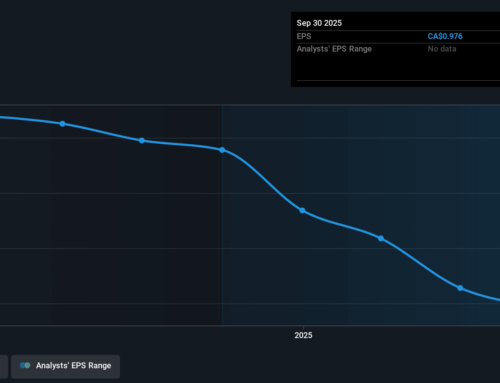Dirty power: The hidden climate cost of electric vehicles
April 12, 2025
Electric vehicles (EVs) have come to symbolize the green revolution. Quiet, zero-emission cars now glide through city streets, while governments offer tax breaks and incentives to accelerate the shift from gasoline to electric power.
Headlines celebrate electric vehicles as a solution for climate change. But are they? A recent study raises new doubts.
Researchers from the University of Auckland and Xiamen University argue that electric vehicles cannot help the planet unless we clean up the electricity that powers them.
The analysis reveals a surprising and uncomfortable truth: electric vehicles can, in some cases, increase carbon emissions.
The research team examined data from 26 countries over a 15-year period using a rigorous method known as the STIRPAT framework.
This analytical tool enables experts to assess the impact of population, economic development, and technological change on emissions.
The researchers looked beyond surface-level calculations. They tested how electric vehicle adoption, renewable energy use, population clustering, and green innovation all shape a country’s carbon output.
The results do not align with the common belief that more electric vehicles mean fewer emissions.
“On the contrary, EV adoption is positively associated with CO₂ emissions. This finding appears counterintuitive. It challenges the conventional belief that EVs contribute to decarbonization,” said study lead author Miaomiao (Simon) Tao, a doctoral candidate at the UoA Energy Centre.
The counterintuitive results of the study are linked to where electric vehicles get their power. In many parts of the world, electricity still comes from burning coal, oil, or gas. Charging an EV in such places often leads to more emissions than using a fuel-efficient petrol car.
“Take EVs charged using electricity from coal-fired power plants. In that case, they may indirectly contribute to higher emissions than modern gasoline or diesel vehicles, especially considering the entire lifecycle from production to disposal,” said study co-author Professor Stephen Poletti.
The experts identified a clear tipping point. Electric vehicles only start cutting emissions once clean electricity makes up nearly half of a country’s power supply.
In 2023, renewables made up just over 30 percent of the global electricity mix. Most nations still fall short.
“Electric vehicles are often seen as a silver bullet for climate change, but our results show that’s not the case if the electricity powering them isn’t clean,” said Professor Poletti.
Some countries do better than others. New Zealand, for example, gets over 80 percent of its electricity from renewable sources. This makes EV adoption far more effective. In such places, switching from petrol to electric really does lower emissions.
“This research is a reminder that decarbonizing transport can’t happen in isolation,” said Professor Poletti. The grid and the garage are closely linked. You can’t clean one and ignore the other.
The researchers also found that countries focused on EV sales alone may miss the bigger picture.
Without electricity reform, the environmental benefits of EVs disappear. Countries must first green their energy sectors before EVs can truly help fight climate change.
The study didn’t stop at electric vehicles. The team analzyed several other factors that influence carbon emissions. Economic growth came out as a strong driver of increased emissions.
More businesses, more consumption, and more industry almost always mean more pollution. On the other hand, green innovation, renewable energy, and population density in urban areas were associated with lower emissions.
Technological advances, especially those related to energy use and storage, helped countries emit less carbon. Densely populated cities, when designed efficiently, used energy more wisely.
Notably, the study found that renewable energy had the strongest emissions-reducing effect of all variables. When renewables replace fossil fuels, the results are dramatic.
How much clean energy do countries need before EVs make a positive difference? According to the study, the magic number is 48 percent.
Once nearly half the electricity comes from sources like wind, solar, or hydro, the environmental gains of EVs begin to outweigh their hidden costs.
Before reaching that point, EVs can actually increase emissions. That’s because battery production and fossil-fuel-powered charging create more problems than they solve.
In high-emission countries, adding more EVs often raises electricity demand, putting more pressure on already dirty grids.
With EV sales growing rapidly – over 10 million units sold globally in 2022 – this tipping point becomes urgent. Nations need to match that growth with equally aggressive investments in renewables.
Using an advanced model called Method of Moments Quantile Regression (MMQR), the researchers found that the link between EVs and emissions varies depending on how polluted a country already is.
In lower-emission countries, electric vehicles had a modest effect. But in high-emission countries, the adoption of EVs actually worsened the situation.
This reinforces the idea that EVs are not one-size-fits-all. They must be part of a broader environmental strategy. Without reforming energy sources, even a fleet of electric vehicles won’t reduce overall carbon output.
The results show that early-stage EV deployment often leads to a spike in electricity consumption. If that power comes from coal, the net emissions rise. As the share of renewable energy grows, this negative effect fades – and can eventually reverse.
The takeaway? Clean cars need clean power. Governments should not treat EVs as an end in themselves. Instead, policies must align EV growth with renewable energy targets, urban planning, and investments in green technology.
Infrastructure matters too. Building smart grids and improving battery storage systems can help EVs use more clean energy.
Likewise, offering incentives for off-peak charging – when renewable generation is high – can reduce their footprint.
If governments only focus on getting people to buy EVs, they risk making climate goals harder to reach. The real gains come when electric vehicles are part of a clean ecosystem, powered by wind, sun, and smarter design.
The future of transport must be electric, but it must also be clean. That’s the core message of this study. It doesn’t reject electric vehicles; It warns that their benefits depend on context – especially the cleanliness of the power grid.
As Tao and Poletti show, electric vehicles alone won’t save the planet. But with the right mix of policies and infrastructure, they can still play a crucial role.
The road to net zero is longer and more complex than many assume. It runs not just through car factories, but through power plants, research labs, and city streets. Electric vehicles are a solid step toward climate mitigation – but only if we power them right.
The study is published in the journal Energy.
—–
Like what you read? Subscribe to our newsletter for engaging articles, exclusive content, and the latest updates.
Check us out on EarthSnap, a free app brought to you by Eric Ralls and Earth.com.
—–
Search
RECENT PRESS RELEASES
Related Post



